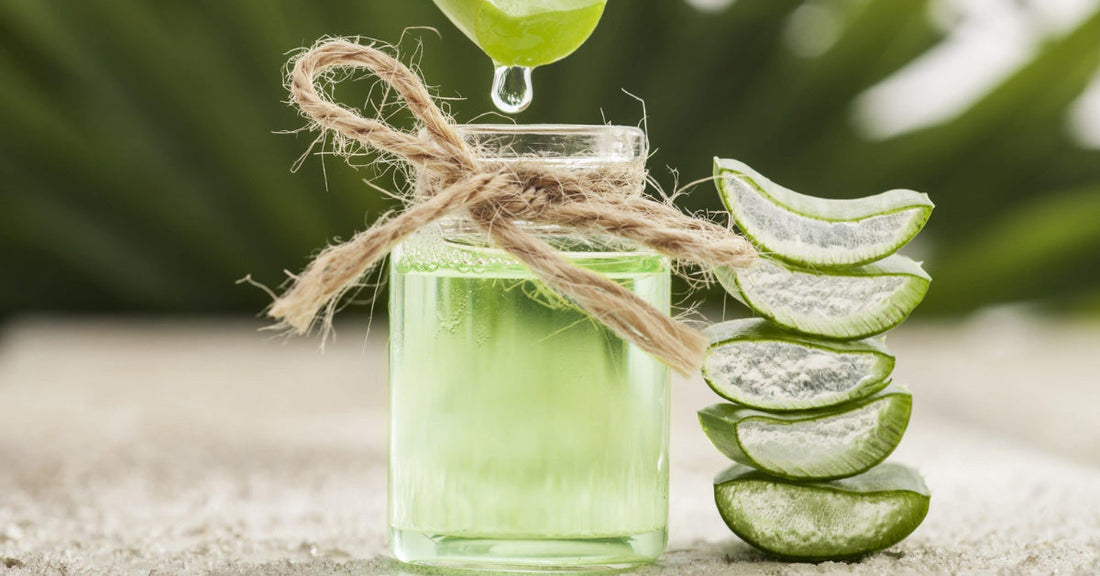In the inventory of our indoor plants, many of us take care of an aloe vera plant. Apart from its soothing qualities when we suffer a burn, are we aware of its many other medicinal properties?
Aloe vera : A little history
First of all, the use of aloe vera in phytotherapy goes back over 5,000 years. Empirically, all civilizations without exception have used it as a therapeutic remedy. There is some speculation that aloe vera may have originated in Egypt or the Middle East, but the plant has long since crossed the globe's warmer regions. The plant is cultivated and naturalized all over the tropics, in Africa, India, Asia, the Caribbean, South America, Mexico and the southern United States.
In ancient history, aloe vera can be found in the oldest Egyptian manuscripts discovered to date, notably the Ebers papyrus, the oldest medical document recorded to date.
In the time of the Pharaohs, the Egyptians worshipped aloe vera, calling it the "plant of immortality".
Closer to home, Christopher Columbus is even said to have had his own aloe vera plant when he set out on a voyage, saying "everything's fine". we have aloe vera on board.3, 4, 5, 6
Aloe vera: Its constitution and properties
Aloe vera is a fatty plant. It stores water in its leaves and roots, making it particularly resistant to heat and drought. Water accounts for 98-99% of its weight. For this reason, the plant is easy to care for, requiring only copious watering from time to time.
On the other hand, it's in the remaining 2% of the plant that we find the precious active substances of unique chemical composition that give it its many therapeutic properties. The main substances discovered to date are found in the inner part of the leaf, in the gel or pulp known as mucilage.
The gel contained in the leaves is rich in antioxidants, mono- and polysaccharides, vitamins, minerals and trace elements, enzymes and amino acids, etc.1
The main constituents of aloe vera
- Anthraquinonesactive substances with a laxative effect.
- Monos and polysaccharidesCarbohydrates responsible for the pulp's gelatinous consistency, which has a regenerating effect on mucous membranes. Its polysaccharides make it a powerful antioxidant.
- Vitamins, minerals and trace elements: Essential nutrients that improve vitality, resistance and circulation.
- Enzymes: their function is to accelerate (catalyze) biochemical metabolic reactions.
- Essential and non-essential amino acidsThese are the building blocks of the body's proteins.
- Secondary plant substances
Aloe vera's popularity stems primarily from its external use
- Relief of minor burns, sunburns, insect bites, cuts and other minor skin irritations.
- Accelerates healing of tissues and wounds
- Antibacterial functions
- Skin benefits: one study showed that taking aloe vera for 90 days significantly reduced the appearance of wrinkles and improved skin elasticity.
The other therapeutic aspect of aloe vera is its internal use, with soothing properties.
- relieves pain caused by irritation of the body's mucous membranes
- Accelerates healing of internal tissues and wounds
- Stimulate and regulate digestive and intestinal functions
- Promote toxin elimination
- Alkalize the body, regulate gastric secretions and soothe inflammation (reflux and heartburn) and reduce bloating.
- Effective in cases of colitis or diverticulosis.5
The importance of good intestinal health
The intestines are fundamental organs in the body's nutritional, metabolic, immune and psychological balance... and are not simply a conduit for the evacuation of food waste. They deserve our full attention.
Healthy intestinal flora is a fragile and precious ecosystem:
- which produces vitamins
- completes the digestion of proteins, lipids and carbohydrates
- neutralizes digestive and biliary poisons
- keeps unwanted pathogenic flora at bay
- helps maintain the body's acid-base balance
- which constantly develops autovaccines to protect other functions, which play a powerful role in natural immunity (immunoglobulins, leukocytosis, lymphoid tissues...).2, 3
Aloe vera gel or juice: which to choose?
Selection criteria
- The plant should be from an organic source, without sugar or glycerine.
- The extraction process must be cold, gluten-free, unpasteurized, with an NPN (Natural Product Number). Natural Product) and supported by a therapeutic indication.4
Instructions for use
- Children and adolescents (1 to 17 years): consult a health care practitioner
- Adults (18 years and over): 1 tablespoonful (15 ml) 2 times a day. May be diluted in water, juice, smoothie, etc.4
When to use aloe vera gel or juice?
- The gel is best suited to the mucous membranes of the mouth, esophagus and even stomach, as its thicker texture will coat these areas.
- The juice, being more liquid, will be more appropriate for more distant regions such as the intestine.4
- Duration of use: for use over 3 months, consult a health-care practitioner.
Land Art products
The Quebec company Land Art offersaloe vera products in liquid form, gel form or juiceand easy to use. Several flavours are available: cranberry, pomegranate, nature and orange tangerine.4
Aloe Vera: recipe ideas
Recipe for a drink made with an extractor
Living delights :
- 2 oz (60 ml) of beet juice
- 2 oz (60 ml) carrot juice
- 2 oz (60 ml) celery root juice
- 2 oz (60 ml) parsley juice
- 1 tbsp (15 ml) of juice or Land Art natural aloe vera gel
Recipe for a drink without extractor
- 2 oz (60 ml) of beet juice
- 2 oz. (60 ml) beetroot juice of carrot juice
- 2 oz. (60 ml) carrot juice of celery root juice
- 1 tbsp (15 ml) of juice or Land Art natural aloe vera gel
About the author
Marie Couture, Certified Naturopath
Specialized in :
- Digestive disorders
- Inflammation
- Hormonal problems
- Stress management
References :
- Graci Sam, Ccrisafi Daniel-J, Superfoods, A harvest of energy that can change your lifeChenelière-Hill, 1998
- Kieffer Daniel, Guide des bilans de santéed. Grancher, 2004
- Lagacé Jacqueline, How I overcame pain and chronic inflammation through dietfides, 2011













